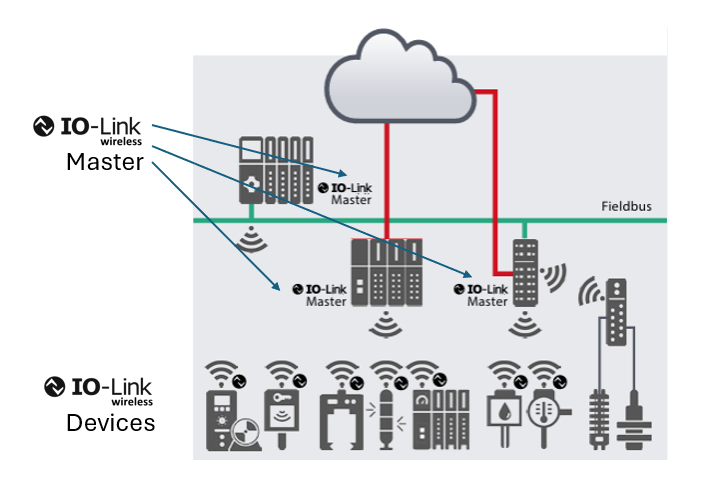Factory Automation Goes Wireless
For reducing installation efforts by eliminating cumbersome wiring or transferring process data to critically moving parts, wireless networks are increasingly being used – also with IO-Link.
The IO-Link Wireless standard offers a reliable, simple and deterministic transmission for factory control systems. It can be used to transmit signals from both sensors and actuators. Complementing wired control applications with IO-Link Wireless can reduce maintenance costs and increase system design flexibility.
There is no difference in the processing of wired IO-Link or IO-Link Wireless data, as the application interfaces for the cyclic and the acyclic data are compatible with the existing IO-Link description. Of course, there are also no changes in terms of programming and system design compared to wired IO-Link.

IO-Link Wireless is based on standardized wired IO-Link technology and offers the same high communication stability.
The flexible and cost-efficient solution can be integrated into an existing wired infrastructure with little effort, sharing the proven IO-Link architecture, consisting of an IO-Link Master and star-shaped connected IO-Link Devices. The single point-to-point connections are mapped virtually via radio.
A maximum device density can be guaranteed by up to 3 Wireless Masters coexisting in the same airspace, each of them supporting up to 40 Wireless Devices. This results in a maximum number of 120 Wireless Devices to be operated within a small production cell of 20x20 meters.
IO-Link Wireless: Some Technical Details
IO-Link Wireless uses the open 2.4 GHz ISM-Band, divided into 80 1MHz channels. The virtual point-to-point connections are realized by a combination of time and frequency division multiplexing. 8 Devices are grouped into so called tracks (TDM). 5 tracks per master are transmitted in parallel with a cycle time of 5 ms (FDM).
For maximum reliability and minimum packet error rate, it’s essential, that the FDM channel hopping is optimized and synchronized for all connected Devices.
For more details, please refer to our IO-Link Wireless flyer and the standard document to be found here.

